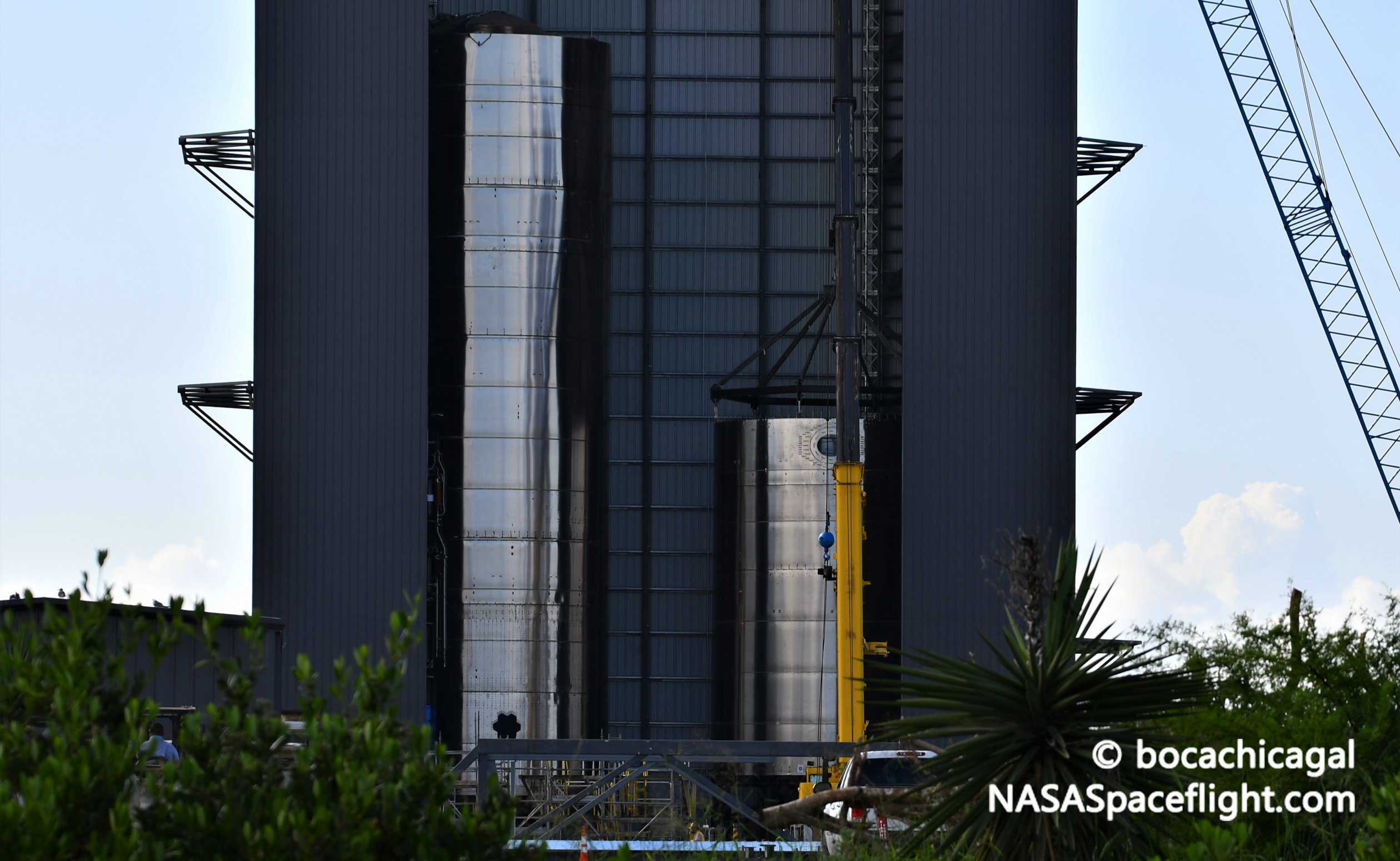
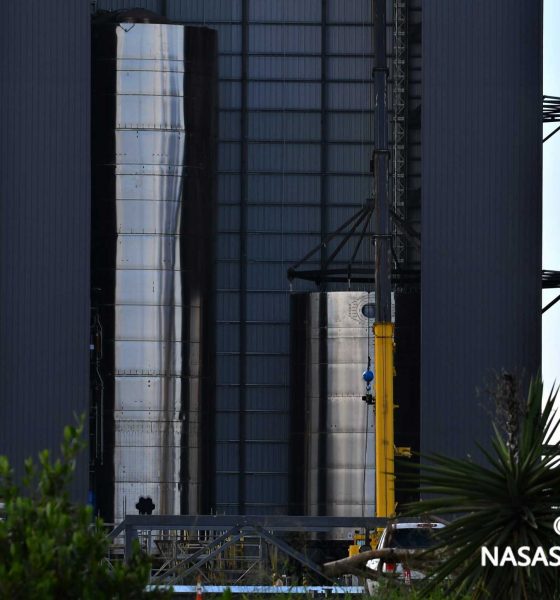
News
SpaceX’s next Starship starts to take shape as Elon Musk talks next steps
Less than a day after SpaceX successfully hopped a full-scale Starship prototype for the first time, the company has begun stacking the next rocket and Elon Musk is talking next steps.
Almost immediately after Starship SN5 took to the sky on a 150m (500 ft) hop debut, SpaceX CEO Elon Musk was talking about the company’s next near-term goals for the next-generation launch vehicle’s test program. To an extent, he had already offered a rough overview through various interviews and tweets over the last year or so. Aside from continuing to gradually refine Starship and Super Heavy designs and the processes used to manufacture and test those rockets, a few major proofs of concept stand between SpaceX and total confidence in the current architecture.
As far as basic rocketry goes, SpaceX’s 150m Starship hop has functionally proven that the company’s exotic, rule-of-thumb-breaking approach to Starship production and assembly can be feasibly refined into something capable of producing extraordinarily cheap orbital-class rockets. While a massive achievement, it doesn’t guarantee that the rockets produced will be reusable – let alone rapidly and easily reusable.
As of now, it can be safely stated that SpaceX has solved all major challenges involved in routinely and reliably landing and reusing orbital-class rocket boosters (first stages). It’s hard and surprises are always a possibility, but the landing records of Falcon 9 and Falcon Heavy boosters speak for themselves. For the colossal booster Starship needs to reach orbit, the Falcon family’s success means that Super Heavy recovery and reuse is more a question of “when” than “if”.
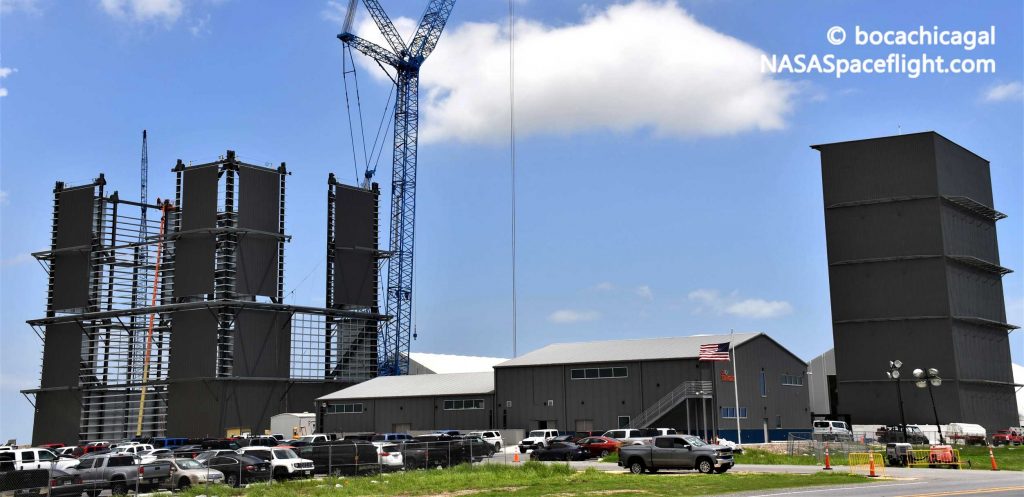
Starship, on the other hand, is going to offer many different challenges – some unprecedented for SpaceX and others unprecedented in the entire history of spaceflight. For Starship to be able to support a level of reuse compatible with what the Super Heavy booster is likely to achieve, SpaceX will have to create the biggest and most effortlessly reusable orbital-class spacecraft ever built.
Even heavier than NASA’s Space Shuttle orbiter, Starship will also rely almost entirely on the unproven technology of on-orbit cryogenic propellant transfer to reach beyond low Earth orbit (LEO). To survive orbital-velocity reentries while still being rapidly and cheaply reusable, Starship will further have to push the envelope of heat shield technologies. Last but certainly not least, in its current iteration, Starship relies on a truly unprecedented style of recovery to efficiently land back on Earth.
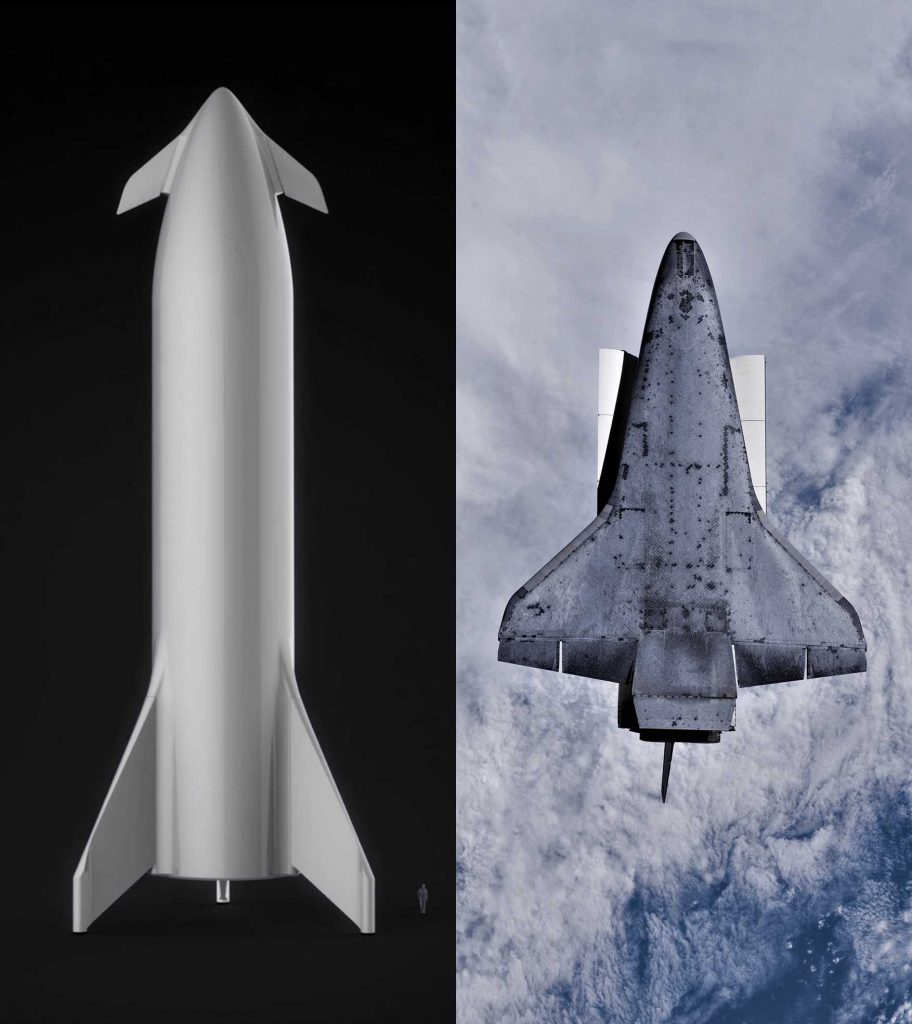
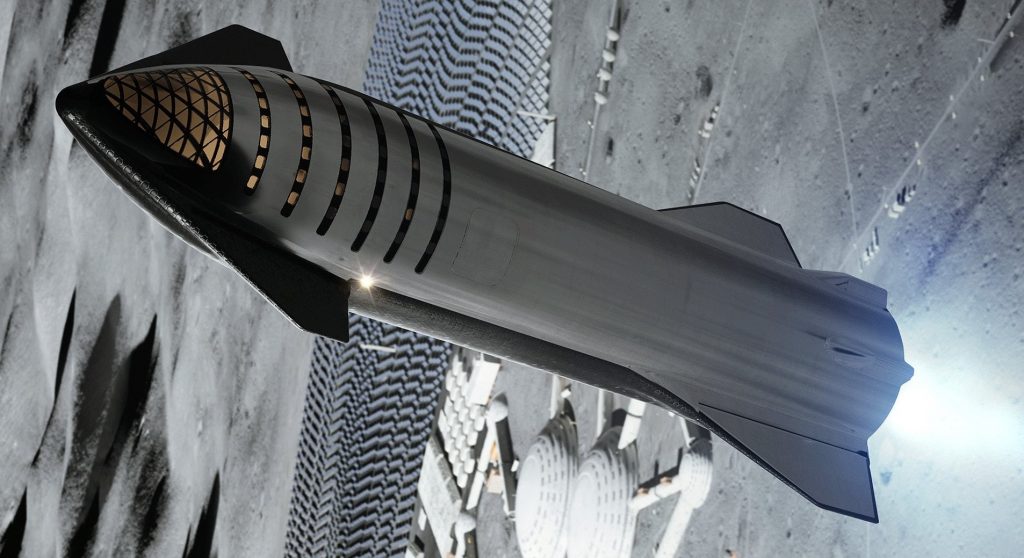
It’s this last bit where CEO Elon Musk’s recent comments and recent activity at SpaceX’s Starship factory come in. According to Musk, SpaceX intends to perform at least several more smaller hops (a la SN5) “to smooth out [the] launch process.” It’s unclear which prototype(s) will be involved in that series of hops but after SpaceX is satisfied with the state of launch operations, the plan is to “go high altitude with body flaps.” Based on past comments, it’s safe to assume that Musk is referring to a plan to launch a Starship to 20 km (~12 mi).
After reaching 20 km, Starship would orient itself belly down – a bit like a skydiver – and quite literally fall its way to ~1 km altitude before attempting an aggressive Raptor-powered pitch-over maneuver and last-second landing. By using Earth’s atmosphere much like a skydiver trying to slow down, Starship will theoretically be able to dramatically reduce the amount of propellant it needs to land.
That high-altitude launch and landing demonstration will also be the first time a Starship truly needs aerodynamic control surfaces (i.e. “body flaps”) to safely complete a flight test. According to NASASpaceflight.com info, Starship SN8 – also the first full-scale prototype to be built out of a different steel alloy – will be the first ship to receive functional flaps and a nosecone. If initial tests go according to plan, SN8 will also be the first ship to attempt a skydiver-style landing as described above. As far as full-scale aerodynamics goes, such a landing is loosely understood at best. For an orbital-class spacecraft, it’s even more of a wildcard.
Regardless, just hours after Starship SN5’s successful hop debut, SpaceX began stacking the first of several already finished Starship SN8 sections. Based on the assembly of past prototypes, the ship’s tank section could reach its full height just a few weeks from now, while subsequent nosecone and flap installations are uncharted territory.
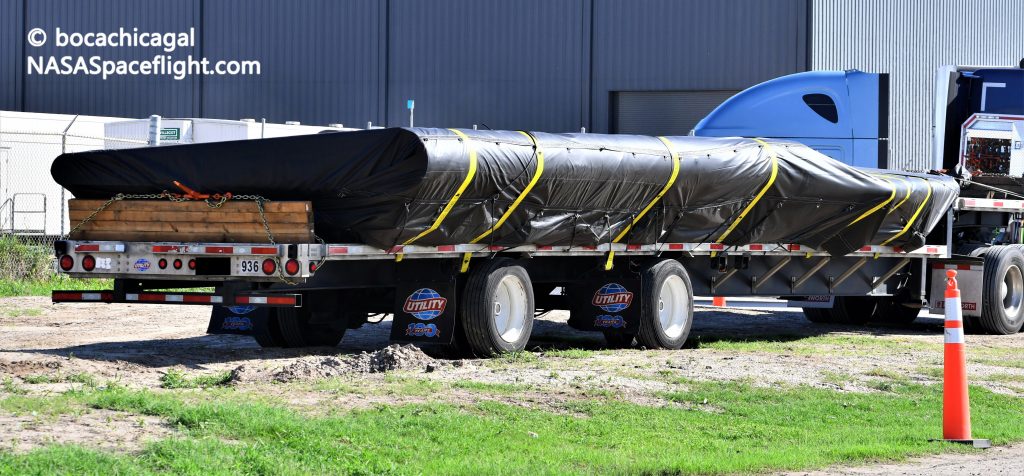
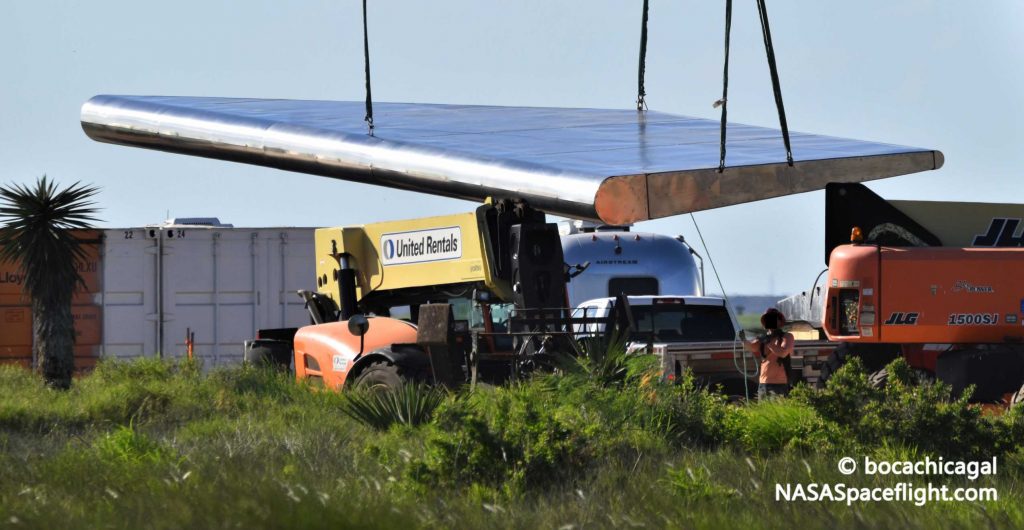
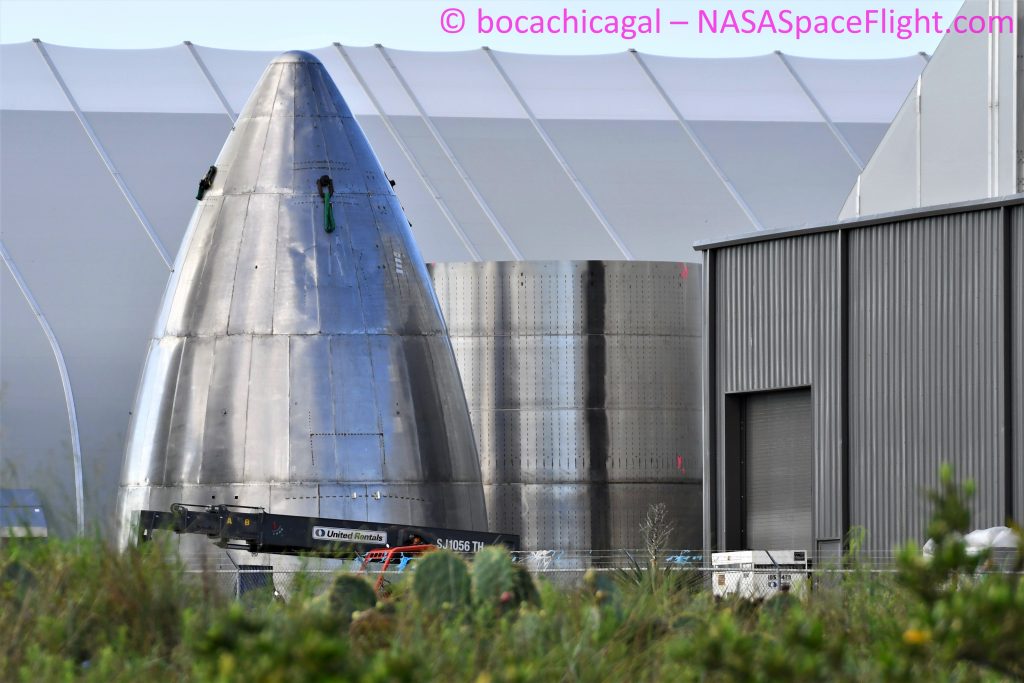
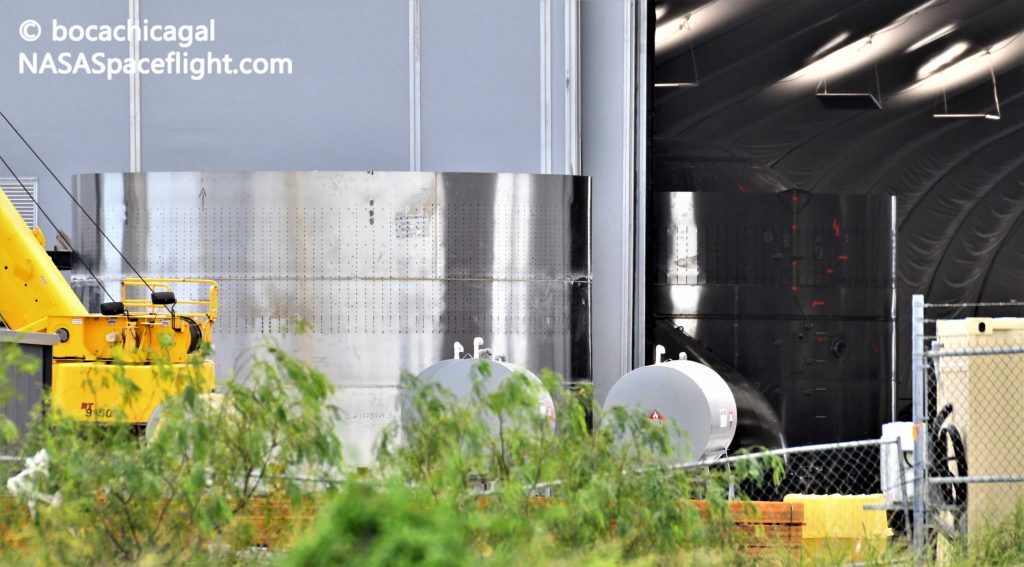
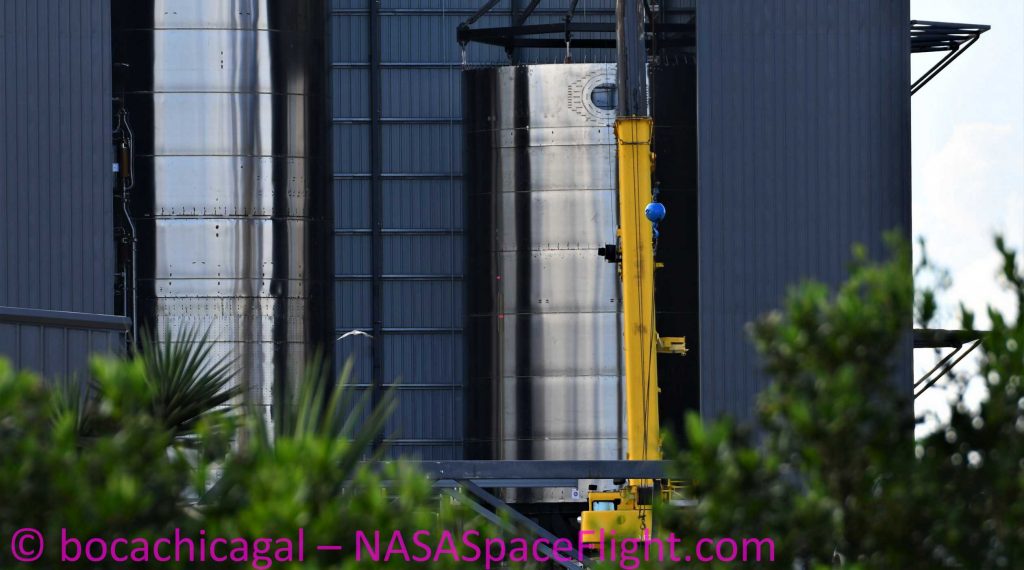
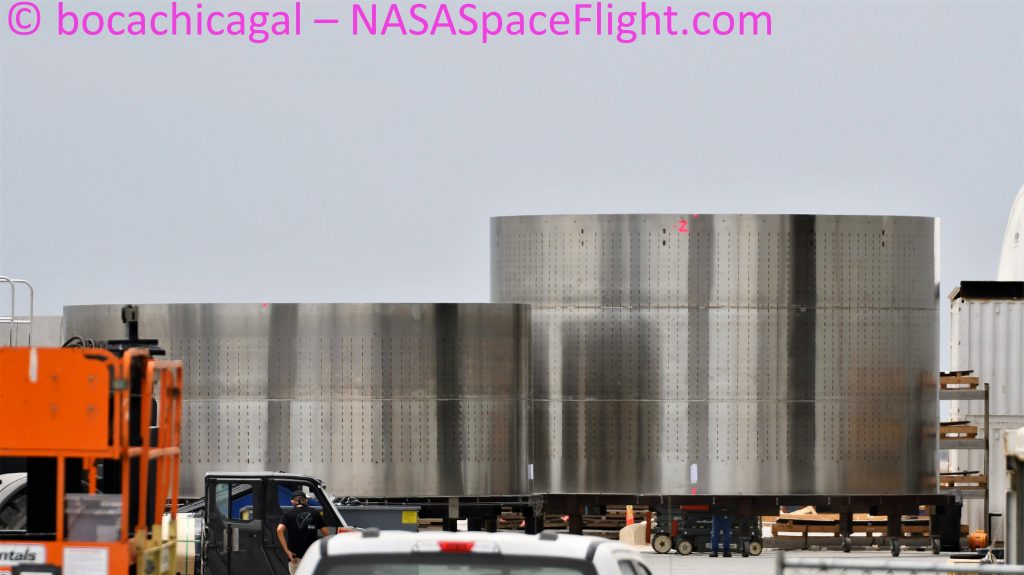
Check out Teslarati’s Marketplace! We offer Tesla accessories, including for the Tesla Cybertruck and Tesla Model 3.

Investor's Corner
Tesla stock closes at all-time high on heels of Robotaxi progress

Tesla stock (NASDAQ: TSLA) closed at an all-time high on Tuesday, jumping over 3 percent during the day and finishing at $489.88.
The price beats the previous record close, which was $479.86.
Shares have had a crazy year, dipping more than 40 percent from the start of the year. The stock then started to recover once again around late April, when its price started to climb back up from the low $200 level.
This week, Tesla started to climb toward its highest levels ever, as it was revealed on Sunday that the company was testing driverless Robotaxis in Austin. The spike in value pushed the company’s valuation to $1.63 trillion.
Tesla Robotaxi goes driverless as Musk confirms Safety Monitor removal testing
It is the seventh-most valuable company on the market currently, trailing Nvidia, Apple, Alphabet (Google), Microsoft, Amazon, and Meta.
Shares closed up $14.57 today, up over 3 percent.
The stock has gone through a lot this year, as previously mentioned. Shares tumbled in Q1 due to CEO Elon Musk’s involvement with the Department of Government Efficiency (DOGE), which pulled his attention away from his companies and left a major overhang on their valuations.
However, things started to rebound halfway through the year, and as the government started to phase out the $7,500 tax credit, demand spiked as consumers tried to take advantage of it.
Q3 deliveries were the highest in company history, and Tesla responded to the loss of the tax credit with the launch of the Model 3 and Model Y Standard.
Additionally, analysts have announced high expectations this week for the company on Wall Street as Robotaxi continues to be the focus. With autonomy within Tesla’s sights, things are moving in the direction of Robotaxi being a major catalyst for growth on the Street in the coming year.
Elon Musk
Tesla needs to come through on this one Robotaxi metric, analyst says
“We think the key focus from here will be how fast Tesla can scale driverless operations (including if Tesla’s approach to software/hardware allows it to scale significantly faster than competitors, as the company has argued), and on profitability.”

Tesla needs to come through on this one Robotaxi metric, Mark Delaney of Goldman Sachs says.
Tesla is in the process of rolling out its Robotaxi platform to areas outside of Austin and the California Bay Area. It has plans to launch in five additional cities, including Houston, Dallas, Miami, Las Vegas, and Phoenix.
However, the company’s expansion is not what the focus needs to be, according to Delaney. It’s the speed of deployment.
The analyst said:
“We think the key focus from here will be how fast Tesla can scale driverless operations (including if Tesla’s approach to software/hardware allows it to scale significantly faster than competitors, as the company has argued), and on profitability.”
Profitability will come as the Robotaxi fleet expands. Making that money will be dependent on when Tesla can initiate rides in more areas, giving more customers access to the program.
There are some additional things that the company needs to make happen ahead of the major Robotaxi expansion, one of those things is launching driverless rides in Austin, the first city in which it launched the program.
This week, Tesla started testing driverless Robotaxi rides in Austin, as two different Model Y units were spotted with no occupants, a huge step in the company’s plans for the ride-sharing platform.
Tesla Robotaxi goes driverless as Musk confirms Safety Monitor removal testing
CEO Elon Musk has been hoping to remove Safety Monitors from Robotaxis in Austin for several months, first mentioning the plan to have them out by the end of 2025 in September. He confirmed on Sunday that Tesla had officially removed vehicle occupants and started testing truly unsupervised rides.
Although Safety Monitors in Austin have been sitting in the passenger’s seat, they have still had the ability to override things in case of an emergency. After all, the ultimate goal was safety and avoiding any accidents or injuries.
Goldman Sachs reiterated its ‘Neutral’ rating and its $400 price target. Delaney said, “Tesla is making progress with its autonomous technology,” and recent developments make it evident that this is true.
Investor's Corner
Tesla gets bold Robotaxi prediction from Wall Street firm
Last week, Andrew Percoco took over Tesla analysis for Morgan Stanley from Adam Jonas, who covered the stock for years. Percoco seems to be less optimistic and bullish on Tesla shares, while still being fair and balanced in his analysis.

Tesla (NASDAQ: TSLA) received a bold Robotaxi prediction from Morgan Stanley, which anticipates a dramatic increase in the size of the company’s autonomous ride-hailing suite in the coming years.
Last week, Andrew Percoco took over Tesla analysis for Morgan Stanley from Adam Jonas, who covered the stock for years. Percoco seems to be less optimistic and bullish on Tesla shares, while still being fair and balanced in his analysis.
Percoco dug into the Robotaxi fleet and its expansion in the coming years in his latest note, released on Tuesday. The firm expects Tesla to increase the Robotaxi fleet size to 1,000 vehicles in 2026. However, that’s small-scale compared to what they expect from Tesla in a decade.
Tesla expands Robotaxi app access once again, this time on a global scale
By 2035, Morgan Stanley believes there will be one million Robotaxis on the road across multiple cities, a major jump and a considerable fleet size. We assume this means the fleet of vehicles Tesla will operate internally, and not including passenger-owned vehicles that could be added through software updates.
He also listed three specific catalysts that investors should pay attention to, as these will represent the company being on track to achieve its Robotaxi dreams:
- Opening Robotaxi to the public without a Safety Monitor. Timing is unclear, but it appears that Tesla is getting closer by the day.
- Improvement in safety metrics without the Safety Monitor. Tesla’s ability to improve its safety metrics as it scales miles driven without the Safety Monitor is imperative as it looks to scale in new states and cities in 2026.
- Cybercab start of production, targeted for April 2026. Tesla’s Cybercab is a purpose-built vehicle (no steering wheel or pedals, only two seats) that is expected to be produced through its state-of-the-art unboxed manufacturing process, offering further cost reductions and thus accelerating adoption over time.
Robotaxi stands to be one of Tesla’s most significant revenue contributors, especially as the company plans to continue expanding its ride-hailing service across the world in the coming years.
Its current deployment strategy is controlled and conservative to avoid any drastic and potentially program-ruining incidents.
So far, the program, which is active in Austin and the California Bay Area, has been widely successful.








